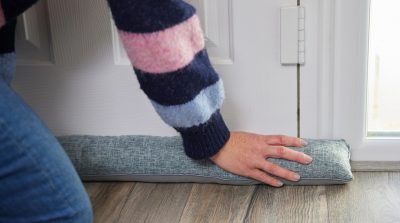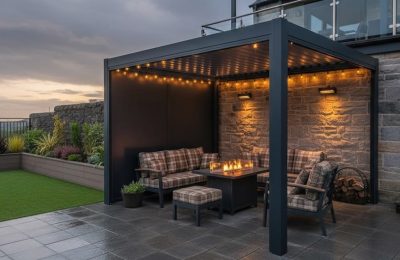‘Retrofit’ refers to the improvement of existing buildings to meet modern energy-efficiency standards. It is a priority for many homeowners, as retrofit measures such as installing heat pumps or insulation can help to save money on energy bills and make their home feel warmer. However, in shared buildings such as tenements, retrofitting common areas of the building can be a complicated task. Working with other owners to make decisions and raise funds can become tricky. Under One Roof provides advice to tenement owners and housing professionals on how to retrofit, with information on every step from checking draughts to launching big projects.
In this article, we examine new guidance which aims to guide homeowners through the legal aspects of retrofitting common areas of their building. It focuses specifically on the installation of solar panels, heat pumps and insulation. It was commissioned by Local Energy Scotland, and written by Harper Macleod LLP, in consultation with Under One Roof and Loco Homes CIC.
Why retrofit?
While retrofitting a tenement property can be challenging, many tenement owners find it worthwhile. Last year, Under One Roof and Loco Homes carried out a feasibility study, examining how a typical tenement building in Dennistoun, Glasgow, could be retrofitted. The study found that by installing heat pumps alone, homeowners could save between £318 and £526 per year on their energy bills. This is without additional measures like improving insulation or adding solar panels. Details of our case study are included in the new guidance.
Aside from the huge savings, you may be encouraged to retrofit your tenement because of the impact it can make on the environment. Heating systems in Scotland’s homes and businesses currently account for a fifth of the country’s carbon emissions, so moving away from carbon-based heating and towards heat pumps and solar panels could make us all less reliant on fossil fuels.
While the new guidance focuses on heat pumps, solar panels and insulation, there are also smaller, less expensive things you can do to improve your home’s energy efficiency and save money on your bills. Under One Roof has guidance on how to tackle draughts, repair your windows, and prevent damp in basements. These smaller steps are a good way to ensure your home is warm and watertight, before you consider installing new heating systems or insulation.
Understanding your titles
Step one of any project involving common areas of your building – those used by everyone, such as the roof, stairs and external walls – is checking and understanding your titles. Your title should be able to tell you which parts of the building are individually-owned and which are common. This is important information when deciding where to install new heating systems, where access will be required for work to take place, and who will be responsible for the maintenance of new heat pumps or solar panels.
You will have received a copy of your title when you bought your property. This could be a paper copy or in an email, depending on when the purchase was made. If you don’t have a copy, you can get one, for a fee, from Registers of Scotland.
Sometimes, titles become outdated, or do not contain all the information you need. In those cases, the Tenements (Scotland) Act 2004 can explain which parts of the building are commonly-owned, and how to work with your fellow owners to make changes to them.
Working with other owners
Speaking of working with your fellow owners, you will likely have to make agreements with them and gain their consent to do retrofit work in common parts of your building. You and your neighbours will need to consent to laying connecting cables or heating pipes, decide which firms will carry out the work, and agree together on how to split the costs. The guidance contains a list of the matters you will need to decide upon together. Depending on the type of equipment being installed, the dimensions of it, and the location of your property, you may also need planning permission for some retrofit projects, alongside permission from your fellow owners.
To make decision-making and fundraising easier, you may decide to set up an owners’ association. This can make it much easier for groups of tenement owners to meet regularly, discuss retrofit options, and make decisions together in line with an agreed-upon constitution. Together with your neighbours, you can co-ordinate your retrofit project step by step, keep track of your decisions in writing, and make sure that nobody is left out of the process.
Another benefit of an owners’ association is that it can make raising funds and paying for work easier. Owners’ associations can open their own bank accounts, often as non-profits or community organisations. Paying into and out of one account can be much more straightforward than every owner paying separately.
As with any project, open, transparent and civil communication with your neighbours is the key to success. If you are a homeowner considering a retrofit project in your tenement building, consider reading the new guide in full for more information.











